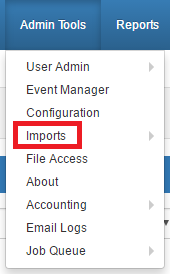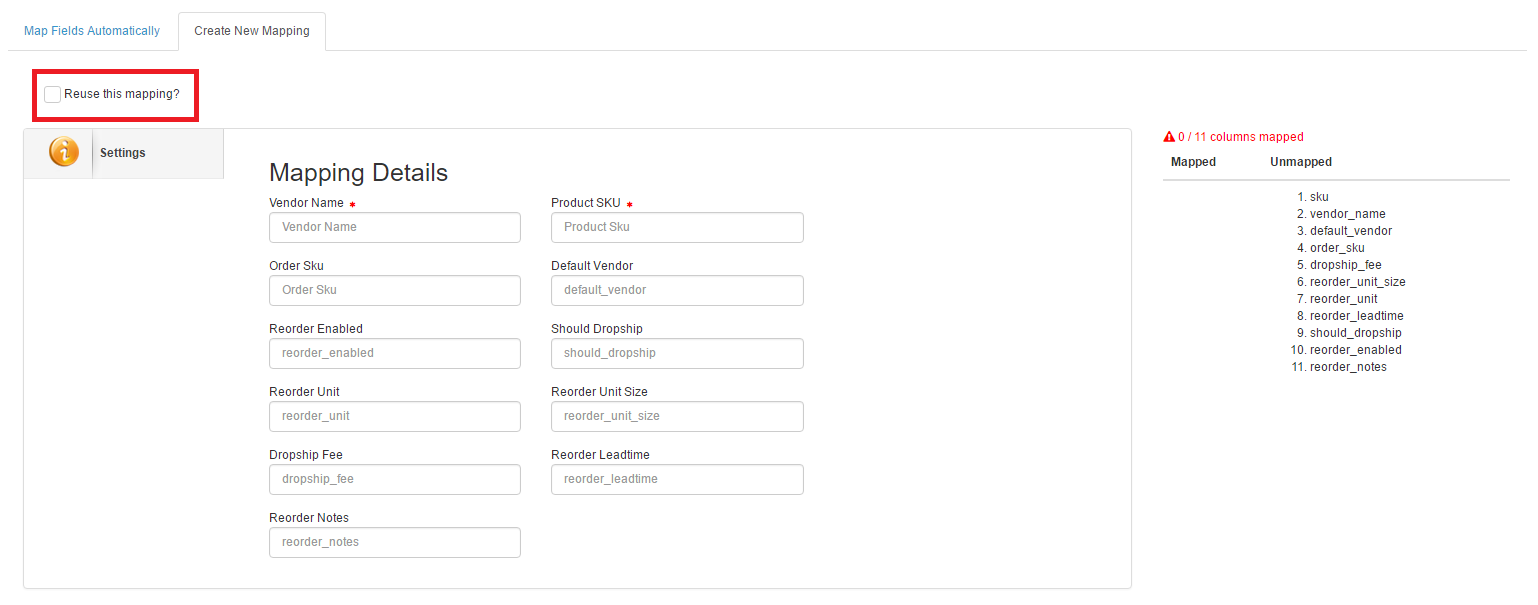What you need to know before importing Product Vendors
If you only have one vendor per product, or the majority of your vendors are one vendor per product, you can use your original product file to import Product Vendors with little or no alteration, provided you have included all of the required fields for Product Vendor imports, and any other related fields available in the table you wish to import, in the original file. However, remember the caveat that any blank fields in a create mode import will overwrite populated fields with blanks!
If you have multiple vendors per product you will have to go about it in a slightly different way, as the product file expects there to be only a single row per SKU. In the vendor file you could have a SKU repeated for as many vendors that sell it to you. If you can, export the products from your legacy system by vendor, and copy them into a single excel sheet. Another option is getting product lists in an electronic format from each vendor. In this case you would likely import one at a time, since it's not likely they will all arrive in the same format. Although you could slice and dice the data from each vendor and create a single import sheet, however, it may not be worth the time it would take.
Remember to locate the required fields in your exported or vendor provided files, and name them as in the field definition file. Any fields not mapped will be ignored during the import.
Go to Admin Tools-> Imports, and click directly on Imports

Type: Choose “Product Vendors”
.png)
File: Choose CSV file – see attached field definitions for file format. The fields where data is REQUIRED in the file are listed in the figure above, on the right side of page. Note that the fields in the CSV file are NOT required to be in any specific order.
Mode: (You should only use create and update for a product vendor import)
Create and Update – will update any changes from the file for existing items, will add any new items from the file to the product database.
.png)
Once all file import settings have been chosen, click NEXT (upper right hand corner)
Step 2: Create a Mapping
NOTE: if you have SIMPLE type products and one vendor per product, the easiest thing to do would likely be including the vendor in PRODUCT upload file, and using that product file to upload your Vendor Products. You must have the vendor_name field in the file, with the appropriate vendor name data. It will be ignored during the PRODUCT upload, but will pick up during the PRODUCT VENDORS process.
It is highly recommended that you DO NOT use the "Map Fields Automatically" option. This can cause problems based on the formating of your .CSV import file.
Instead, use the "Create New Mapping" option. This will allow you to manually map the columns in your .CSV file to their corresponding fields in SalesWarp. If you want to reuse the mapping you created for future imports of this type, be sure to click on the "Reuse this mapping" option near the top of the page.

The file is then read, and a list of the fields in the SalesWarp database which match, or (don’t match) the CSV file is displayed. If you have an “X” in any row for the “Field Found” column, then you either need to (1) rename those fields in your CSV file to match the field from list, or (2) add fields that may be missing entirely, or (3) create a new mapping. For missing fields, the field headers are required, simply add them as blank columns. Data is not required except as noted above. Note that if you need to alter the file, you will have to start the import process again.
If you have no “X” in the “Field Found” column, then you may immediately select the map fields automatically button. Additionally, note that if there are fields in the file that aren’t listed they will be ignored. Note: if the headings do not match, and you do not map manually, then those columns, also, will be ignored.
Remember that the field headings are case sensitive! It will likely always be easier to rename the headings in your file, than to build a map. That way you can always use the map automatically and not have to worry about constantly building or reusing a created map.
When ready to continue, click “Next” in upper right hand corner.
Step 3. Verify and Process the Import File
Click "Verify File" and the system will verify the file data, and you will be alerted to any specific issues in the file that need to be corrected prior to importing. If there are no issues with the file, you may be given an option to process the file immediately, but more likely you will be required to queue the file to process later. (Process now functionality is based on the file size - If you have more than a few vendors, your file will probably not pass the size check.)
If you want to monitor the queue, press “back to list” button in top left hand corner, and then the queue button on the far right - you will be able to see if the file has begun or finished processing. Note you may need to hit the refresh button on your browser.
If you have any questions or require further assistance, please feel free to contact us at support@saleswarp.zendesk.com